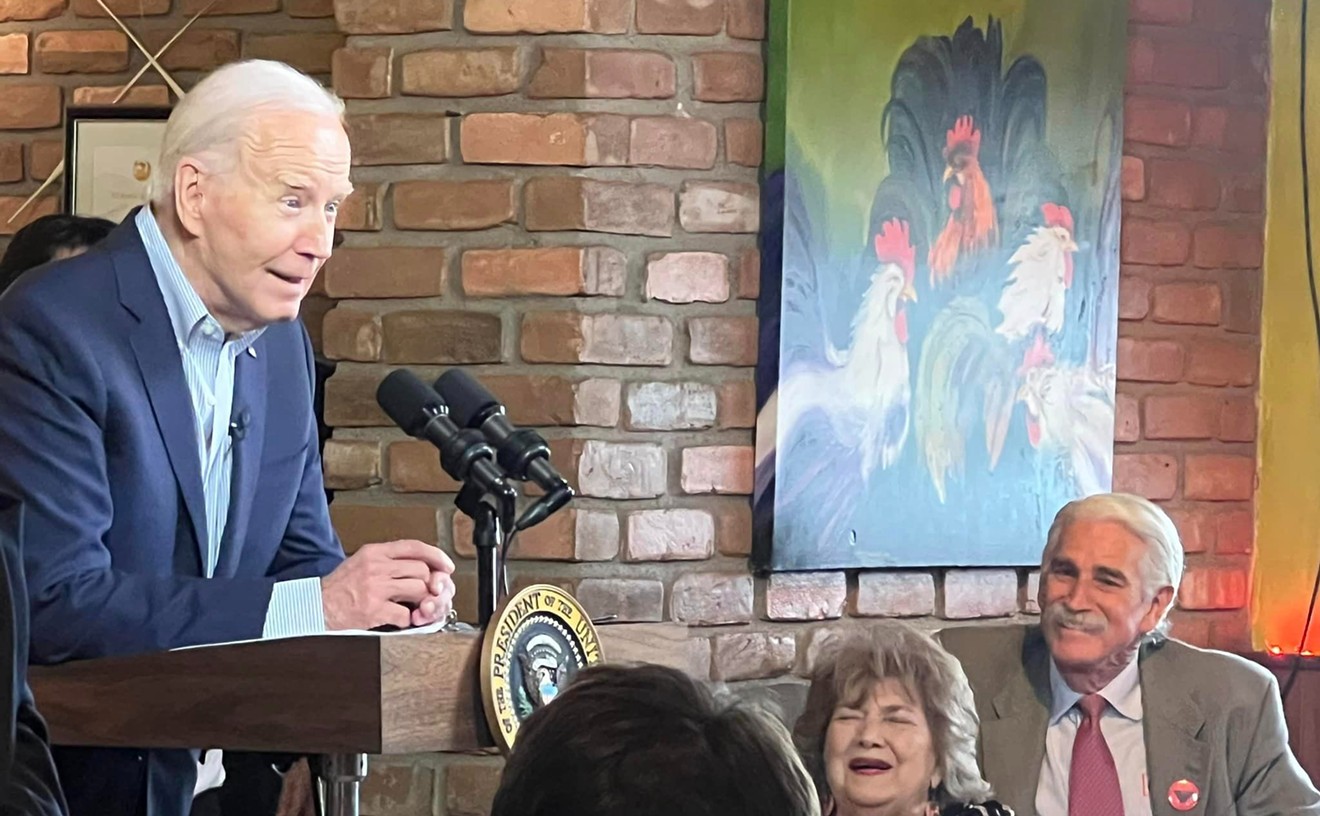The board voted to authorize up to $5 million during its monthly board meeting on Thursday. At that meeting, officials from the Central Arizona Project and the Arizona Department of Water Resources also shared that Ducey would request $5 million in his executive budget.
"It hasn't been discussed publicly, previously," said Sally Stewart Lee, a spokesperson for the Department of Water Resources, in confirming that the $5 million was specifically for groundwater infrastructure. She said that stakeholders had started privately discussing that funding in mid-December, noting that Thursday's meeting was the first public opportunity since then for officials to mention it.
Asked for comment, Patrick Ptak, a spokesperson for Ducey's office, deferred to the water resources department.
The $10 million put forward Thursday would help match $15 million the federal government is kicking in for building pumps, wells, and other structures that farmers could use to tap into groundwater. The federal funds were given on the condition that local entities in Arizona match it, Suzanne Ticknor, water policy director for the Central Arizona Project, told the board.
The additional funding comes at a critical time for Arizona. It has until the federally set deadline of January 31 to agree on a plan to deal with looming shortages on the Colorado River. One of the major concerns with that plan has been that it requires farmers to rapidly transition from surface
water to groundwater, a process with a hefty price tag."There's a great opportunity down in Pinal." — Suzanne Ticknor, water policy director for the Central Arizona Project
tweet this
Pinal County irrigation districts initially estimated that the groundwater infrastructure would cost $30 million to $35 million to build. On Thursday, it turned out that projected costs had been revised to as much as $50 million.
“The demand for the groundwater ... is concentrated over a few months of the year. It’s not evenly spread over 12 months," Ticknor said. "It is fair to say that the program likely will need to be bigger than $30 million because of this timing-of-demands issue.”
Brian Betcher, the general manager for the Maricopa Stanfield Irrigation and Drainage District, explained that in its initial cost analysis, the district had looked at brand-new wells generating water 11 months of the year. Members realized that farmers really use water only about seven months each year, starting around April.
"We missed that in the analysis," Betcher said at Thursday's meeting.
But, he and others were quick to point out, farmers in Pinal County were not the only ones who might use those new pipes, pumps, and wells to pull water from below ground. The Central Arizona Project and other users could also use them, though they're only allowed to recover water they had previously stored underground.
Running pumps in the off-season could be "a point for recovery," Betcher said.
A few minutes earlier, attorney Paul Orme, who represents several Pinal County irrigation districts including Maricopa Stanfield, had asked the CAP board to contribute $10 million for infrastructure — $5 million this year, and $5 million the next.
"It's critical to us that the local cost share, which is everybody but the federal government, comes together pretty quickly," he said. He added, "We could see these facilities as being shared facilities."
Ticknor echoed that idea.
"There's a great opportunity down in Pinal," she said. "There have been a lot of credits stored in the Pinal [Active Management Area]. We need a way to get them out."
The funds that the CAP board authorized — almost unanimously — would come from ad valorem taxes, which the board is authorized to levy on property owners in Maricopa, Pima, and Pinal Counties. Board members made that funding contingent upon other groups' helping to match federal funding, and upon the development of a program that includes infrastructure for recovering stored groundwater.
The sole dissenting vote came from Jennifer Martin, one of the board's new members, who said she was concerned about the negative consequences of increasing groundwater pumping. In parts of Arizona, groundwater over-pumping has caused land to sink and giant fissures to open up in the ground.
The $5 million Ducey pledged would be in addition to $30 million he committed in November to Arizona's Drought Contingency Plan, which would not count toward the federal matching program for groundwater. That $30 million would go toward paying water users to leave water in Lake Mead, the reservoir on the Colorado River that supplies Arizona, in order to prevent it from dropping to catastrophically low levels.
The Drought Contingency Plan spells out how Arizona cities, tribes, industries, and farmers will share cuts amounting to at least 512,000 acre-feet from the 2.8 million acre-feet of water they take from the Colorado River each year. (An acre-foot is about 326,000 gallons.) Those cuts are expected to start in 2020, when the Bureau of Reclamation gives the Colorado River a 57 percent of falling into shortage.
The plan weans farmers, who gave up their rights to Colorado River water in the 2004 Water Settlement Act, off of that surface water and onto groundwater instead. According to the plan, farmers will need to pump 16,500 acre-feet of groundwater in 2022, the last year they'll still receive some Colorado River water. The following year, their pumping will increase to 70,000 acre-feet.
The governor's office also supports repurposing a groundwater withdrawal fee to go toward groundwater infrastructure, said Tom Buschatzke, director of the Arizona Department of Water Resources, during Thursday's meeting. The withdrawal fee is paid by farmers in Pinal County and generates about $1.2 million a year.












